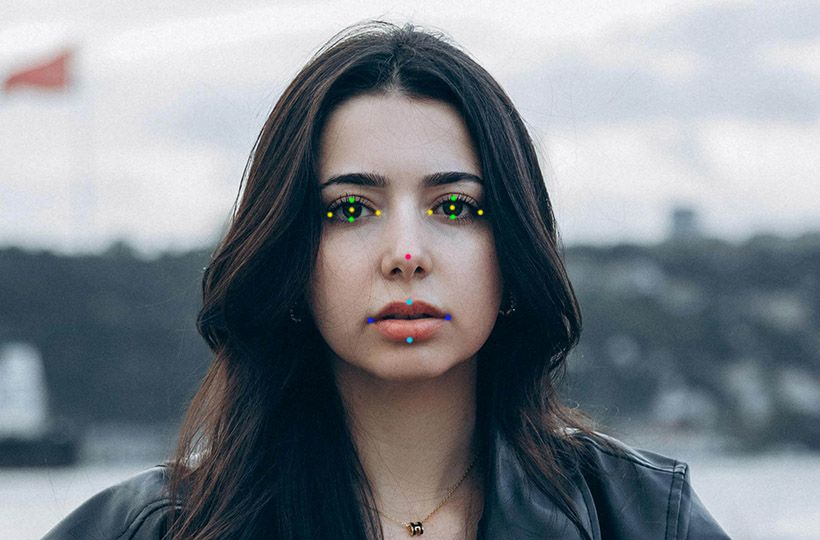Next-Gen Image Processing with Machine Learning Projects

Machine learning algorithms have revolutionized image processing. They allow computers to analyze, interpret, and manipulate visual data. This has led to increased accuracy and efficiency in the field.
Thanks to deep learning and computer vision, tasks such as image recognition, object detection, and color manipulation have been completely transformed. This has impacted industries as diverse as healthcare, automotive, and entertainment.
Quick Take
- Machine learning algorithms have revolutionized image processing, enabling advanced analysis and interpretation of visual data.
- These projects include image recognition, object detection, restoration, and color manipulation.
- Deep learning and computer vision algorithms are critical to the success of machine learning projects in image processing.
- The accuracy and efficiency of machine learning models depend on the quality and diversity of training data.
- Incorporating open-source libraries and frameworks speeds up and simplifies image-processing projects.

Introduction to Computer Vision and Image Processing
Computer vision is a branch of artificial intelligence that is designed to teach machines to interpret visual data, such as images and videos. It involves using sensors and algorithms to learn from this input and extract information.
Applications of Computer Vision:
- Reverse engineering
- Security inspections
- Image editing
- Computer animation
- Autonomous navigation
- Robotics
Computer vision will improve companies' operations by performing visual data analysis, image interpretation, and computer animation tasks. In robotics, it allows devices to sense and understand their environment, enabling autonomous movement and interaction.
Image Processing
Image processing involves modifying and analyzing images to reveal important content or improve clarity. These techniques are used in applications such as image recognition, data analysis, and interpretation.
Image processing is based on computer vision and machine learning algorithms. These algorithms can find features, segment images, and accurately classify objects.
Emerging Trends:
- Deep learning for image analysis.
- Advances in image recognition.
- Better visual data analysis methods.
- Real-time image interpretation.
- Image recognition using machine learning.
The Importance of Machine Learning in Image Processing
Sophisticated algorithms and machine learning neural networks enable the processing of large data sets. They find patterns, predict outcomes, and classify them with precision. These methods have optimized the processing of visual information.
Algorithms can identify patterns in images by analyzing large amounts of data. These patterns range from simple shapes to complex structures and functions.
Neural networks have several layers that carefully study different aspects of the image. This gives an idea of the image's attributes and allows you to recognize objects, textures, and colors.
The effectiveness of machine learning in image processing depends on the data quality. The data should cover a wide range and contain real-life situations. The variety of images allows the AI model to learn to recognize new visual effects.
Combining machine learning and image processing opens up a wealth of possibilities. With neural networks and rich training data, machines can perform complex analyses, identify patterns, and categorize objects.
Applications of Machine Learning in Image Processing
Machine Learning Projects for Edge Detection
The main task in image processing is to find the contours of objects and shapes in images. Canny is a popular algorithm that accurately detects edges. It reduces image noise, calculates gradients, and connects edges.
Denoising detects true edges, among other factors. The algorithm then calculates gradients to find areas of intense change that signal edges.
After finding the gradients, these edge points are refined. Only the maximum gradients are kept. Then, thanks to a double threshold, the edge pixels are classified as strong, weak, or no edges.
The final step of Canny is edge linking, which combines weak and strong edge pixels to form a sequence of edges. This action identifies edges from the original image.
Comparison of Edge Detection Techniques
Combining machine learning with edge detection algorithms results in better edge detection. This has implications for autonomous transportation, medical imaging, and augmented reality.
Machine Learning Projects for Object and Shape Recognition
A practical method is bounding boxes. They highlight the found objects and make further analysis and classification easier.
Image segmentation algorithms are used for more detailed recognition. They separate objects from the background, allowing AI models to focus on each object or shape separately.
Innovations in object and shape recognition aim to improve accuracy and speed. Contour detection and bounding boxes combine methods to achieve detailed recognition in projects.
Machine Learning Projects for Image Restoration and Enhancement
Machine learning and deep learning are used in image restoration and enhancement projects. These projects address issues such as noise, blur, or low resolution. They make images look better and more accurate.
One area is facial restoration. They use algorithms to make facial images sharp and detailed. This is important for restoring historical photographs or improving low-resolution facial images.
Denoising uses algorithms that learn to detect and remove noise in images, making them clear and sharp. Machine learning can eliminate the blurring effects by looking at the data, resulting in detailed images.
Achieving high resolution is more difficult. This makes low-resolution images detailed and sharp. AI models learn from high-resolution images to create images from low-resolution images.
Machine Learning Projects for Color Detection and Manipulation
Color detection and manipulation projects are developed by identifying and manipulating specific colors in images. With machine learning, projects can identify and separate colors based on their hue, saturation, and value. The HSV color space, which stands for Hue, Saturation, and Value, offers a more complete representation of colors.
This technology is used in video and image editing, computer vision, and graphic design. One effective one is the invisibility effect. It detects a selected color and removes or modifies it, thus creating the illusion of invisibility.
Elements of the HSV color space:
- Hue. A primary color with values from 0 to 360 degrees. It defines a color on the wheel based on wavelength.
- Saturation, measured from 0 to 100%, indicates how pure or intense a color is and whether it is bright or neutral.
- Value. The brightness of the color is from 0 to 100%. Determines whether it is light or dark.
This allows machine learning to identify colors in media.

Machine Learning Projects for Text Detection and Recognition
Text detection and recognition projects are needed to extract text from images. They convert text into data using machine and deep learning. Optical character recognition algorithms provide readability of the text. Techniques like character segmentation and feature extraction help in this process.
These projects are used in many fields, such as document scanning and digital archiving. They help extract text data from images or videos and support data-driven decision-making.
Using OCR to digitize printed documents makes the printed text available for editing and searching. This eliminates the need for manual input, making the task easier.
Automated data extraction involves training AI models to extract information from documents such as invoices. This saves time and prevents human error caused by manual input.
Convolutional Neural Networks (CNN) and Recurrent Neural Networks (RNN) are the basis of deep learning models. They look at image patterns to find and read text. These patterns separate characters, which gives reading accuracy.
Applications of Machine Learning in Text Detection and Recognition
Machine Learning Projects for Facial Recognition
Facial recognition projects help improve people's authentication based on facial features. They use sophisticated machines and deep learning to analyze facial features in images or videos. These algorithms rely on features, eye shape, and eye distance to produce reliable results even when the appearance changes. The main methods are pattern matching and neural networks. Law enforcement agencies use this technology to access and improve personal experience.
Advances in Facial Recognition
The introduction of deep learning and neural networks has grown facial recognition. This progress has increased the system's reliability and accuracy in various areas.
Neural networks refine the selection of facial features, revealing complex details that were previously missed. Facial recognition has also become faster and more accurate, which is important in security projects and image analysis.
Facial Recognition Applications
- Law enforcement. Used to identify and track suspects, assist in investigations, and ensure public safety.
- Access control. Provides secure access solutions, replacing legacy systems such as key cards or passwords.
- Personalized user experience. Better engages users with phone unlocking, content recommendations, and personalized services.
These examples highlight facial recognition's broad application and potential in solving problems and improving customer experiences.
Facial Recognition Algorithms and Techniques
Open Source Image Processing Libraries and Frameworks
Open-source libraries and frameworks provide ready-to-use functions and algorithms, making image processing easier. Tools designed for computer vision tasks allow developers to focus on the more complex functions of their projects.
- OpenCV is known for its wide range of computer vision capabilities, making it a versatile tool. It covers functions for image loading, processing, object detection, and more, making it suitable for a variety of needs. Its compatibility with platforms and multiple programming languages makes it accessible to a large community of computer vision developers.
- TensorFlow provides developers with a set of tools for image-related tasks, including image classification, object detection, and segmentation. Due to its structure and distributed computing capabilities, it is useful in projects requiring significant scale image processing.
- PyTorch has a dynamic graph and a user-friendly API, making it easy to build and deploy AI models. For image processing, PyTorch has features like image recognition and object detection. It integrates with other deep learning libraries, making it accessible for many projects.
- Dlib is a C++ library that excels at face recognition and alignment tasks. Dlib's performance in real-time applications is unmatched.
These open-source tools simplify image processing and speed up project development. They use off-the-shelf algorithms, saving developers time and effort.
Datasets for training machine learning models in image processing
- The CelebA dataset is essential for face recognition. It contains over 200,000 celebrity photos and includes 40 annotations for each photo. This large collection allows AI models to identify and classify faces.
- The DIV2K dataset contains high-resolution images from games, natural scenes, and more. Due to its diversity, DIV2K is ideal for training AI models to enhance visual images.
- The COCO dataset is suitable for object detection and categorization. It contains images of 80 object classes, which allows for accurate training of the AI model. This level of detail makes it indispensable for accurate object detection tasks.
FAQ
What is Computer Vision and Image Processing?
Computer vision interprets visual data such as images and videos, seeking to understand their content. Image processing extracts useful information from them.
Why is machine learning important for image processing?
Machine learning helps computers recognize patterns in images. It is central to training AI models for image processing.
What is edge detection, and how is it used in image processing?
Edge detection finds boundary lines and edges in an image. It is used for image segmentation, object detection, and feature extraction.
What are some machine learning projects for image restoration and enhancement?
These include image denoising, deblurring, face restoration, and resolution.
How can machine learning be used for color detection and manipulation?
Algorithms accurately identify and extract specific colors in images. This allows you to modify colors, such as removing or enhancing them.
How does facial recognition work in image processing?
Facial recognition compares facial features from images or videos with existing data. Its goal is to identify faces accurately.
What are the open-source libraries and frameworks for image processing?
OpenCV, TensorFlow, PyTorch, and Dlib. They provide basic functions and algorithms for computer vision and image processing applications.
What are the datasets for training machine learning models in image processing?
CelebA is used for face recognition, and DIV2K is used for resolution. COCO detects objects. These help train the AI model.




